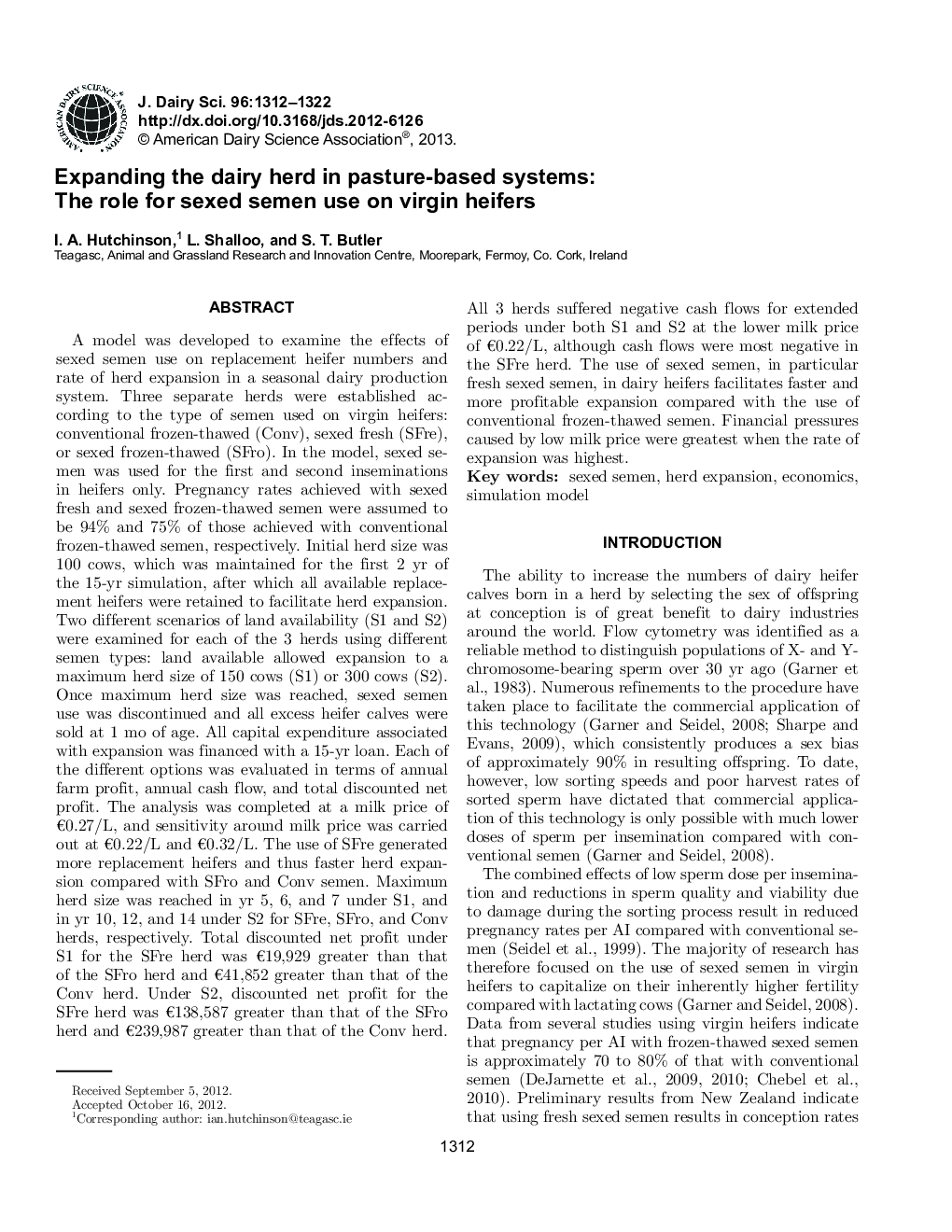| Article ID | Journal | Published Year | Pages | File Type |
|---|---|---|---|---|
| 10980022 | Journal of Dairy Science | 2013 | 11 Pages |
Abstract
A model was developed to examine the effects of sexed semen use on replacement heifer numbers and rate of herd expansion in a seasonal dairy production system. Three separate herds were established according to the type of semen used on virgin heifers: conventional frozen-thawed (Conv), sexed fresh (SFre), or sexed frozen-thawed (SFro). In the model, sexed semen was used for the first and second inseminations in heifers only. Pregnancy rates achieved with sexed fresh and sexed frozen-thawed semen were assumed to be 94% and 75% of those achieved with conventional frozen-thawed semen, respectively. Initial herd size was 100 cows, which was maintained for the first 2 yr of the 15-yr simulation, after which all available replacement heifers were retained to facilitate herd expansion. Two different scenarios of land availability (S1 and S2) were examined for each of the 3 herds using different semen types: land available allowed expansion to a maximum herd size of 150 cows (S1) or 300 cows (S2). Once maximum herd size was reached, sexed semen use was discontinued and all excess heifer calves were sold at 1 mo of age. All capital expenditure associated with expansion was financed with a 15-yr loan. Each of the different options was evaluated in terms of annual farm profit, annual cash flow, and total discounted net profit. The analysis was completed at a milk price of â¬0.27/L, and sensitivity around milk price was carried out at â¬0.22/L and â¬0.32/L. The use of SFre generated more replacement heifers and thus faster herd expansion compared with SFro and Conv semen. Maximum herd size was reached in yr 5, 6, and 7 under S1, and in yr 10, 12, and 14 under S2 for SFre, SFro, and Conv herds, respectively. Total discounted net profit under S1 for the SFre herd was â¬19,929 greater than that of the SFro herd and â¬41,852 greater than that of the Conv herd. Under S2, discounted net profit for the SFre herd was â¬138,587 greater than that of the SFro herd and â¬239,987 greater than that of the Conv herd. All 3 herds suffered negative cash flows for extended periods under both S1 and S2 at the lower milk price of â¬0.22/L, although cash flows were most negative in the SFre herd. The use of sexed semen, in particular fresh sexed semen, in dairy heifers facilitates faster and more profitable expansion compared with the use of conventional frozen-thawed semen. Financial pressures caused by low milk price were greatest when the rate of expansion was highest.
Related Topics
Life Sciences
Agricultural and Biological Sciences
Animal Science and Zoology
Authors
I.A. Hutchinson, L. Shalloo, S.T. Butler,
